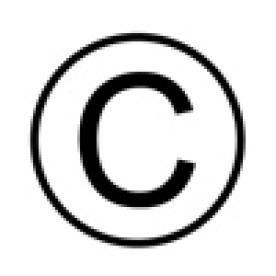This isn’t meant as a trick question. While proving a decline in a client’s revenue may often be easy (sales were at X in 2012, then Y in 2013), it can often be much more difficult to connect the story of that revenue decline with the core elements of a false advertisement or copyright infringement case.
Simply illustrating a revenue decline does not always translate automatically to a recovery of lost profits. A recent, detailed lost profits analysis opinion from the Northern District of Alabama sheds some very helpful light on how you may want your experts in false advertisement or copyright infringement cases to prove not only lost profits, but that the loss was caused by the defendant’s wrongful actions.
The Plaintiff
The plaintiff in this matter, Snac Lite, a nut butter manufacturer, was pursuing an allegation of false advertising against the defendant, Nuts ‘N More, for its allegedly false claim that its nut butter product contained fourteen grams of protein per serving. Snac Lite proved, at least arguably, the statement was false by submitting a study that showed the fourteen-gram count was inflated. Snac Lite was seeking a combined $9.3 million ($2.6 million in lost sales and $6.7 million earned by the defendant, which it was seeking to disgorge) and had some proof the statement was false. What could go wrong? Proof of damages is what went wrong. The basis for Snac Lite’s lost profits claim? That the profits were lost/incurred during the time Nuts ‘N More was promoting its fourteen-gram claim. Do you see the problem there? Hopefully one word is ringing in your mind:
Causation
Let’s look at a few key elements of plaintiff’s claim for lost profits, which Judge David Proctor dissected. These elements can provide a guide for proving such factors, or help identify when they are missing in support of or opposition to a claim for lost profits
Two Sides to Every Story
One of Judge Proctor’s initial criticisms of Snac Lite’s approach was its failure to analyze the marketing strategy of both parties. While Snac Lite’s causation expert, Dr. Robicheaux, studied the market for the defendant’s products, he made no attempt to analyze Snac Lite’s marketing strategy or its target audience. Judge Proctor found it telling that Nuts ‘N More’s products have a “distinctive, fitness-oriented, brand personality,” they are sold only at fitness and supplement shows and stores, such as GNC, Whole Foods, etc., and are promoted heavily in social media flouting many fit, “celebrity customers.” Snac Lite’s products, on the other hand, are not advertised in fitness magazines, Snac Lite does not attend fitness trade shows, nor does it have a social media presence. The products are sold at conglomerate grocery stores such as Walmart, Publix, Kroger, etc. This type of targeted, intentional marketing can make or break a lost profits case.
Snac Lite’s products, on the other hand, are not advertised in fitness magazines, and they are sold at conglomerate grocery stores. This type of targeted, intentional marketing can make or break a lost profits case.
Study Up
Judge Proctor also expressed surprise that the plaintiff’s expert had not conducted any studies or investigation to persuasively demonstrate that consumers chose Nuts ‘N More’s products over Snac Lite’s because of the fourteen-gram claim. Robicheaux did not speak to any customers, conduct customer surveys, conduct focus groups, or interview any authorized representative of Nuts ‘N Mores distributors or retailers. While Judge Proctor noted this is not the “only type of evidence that would support a finding of causation,” you may find these examples helpful if you are trying to prove or disprove a claim for lost profits.
The Shark Tank Factor
We call it that because that was actually what happened here, i.e., the defendant Nuts ‘N More appeared on the popular entrepreneur show Shark Tank and received some funding and a great deal of publicity as a result. Remember to look for the wild card. Publicity from the Shark Tank show was something the plaintiff failed to take into consideration when alleging the change in profits was caused solely by Nuts ‘N More’s false “fourteen-gram” promotion. Another wild card? The plaintiff, Snac Lite, had to recall an entire batch of products as a result of salmonella poisoning and was not able to produce for a period of time while searching for a new manufacturer. This was not considered by Snac Lite’s expert in opining as to the cause of plaintiff’s lost profits either. Judge Proctor referred to these as “relevant factors related to the parties’ sales positions.”
We always like to see a detailed dissection of an expert’s opinion, particularly when—as here—it resulted in the exclusion of both of the plaintiff’s experts and an entry of summary judgment in favor of the defendant. The cause of lost profits is not always clear, but perhaps Proctor’s probing will help you get a little more creative in your proof or defense of lost profits.




 i
i

